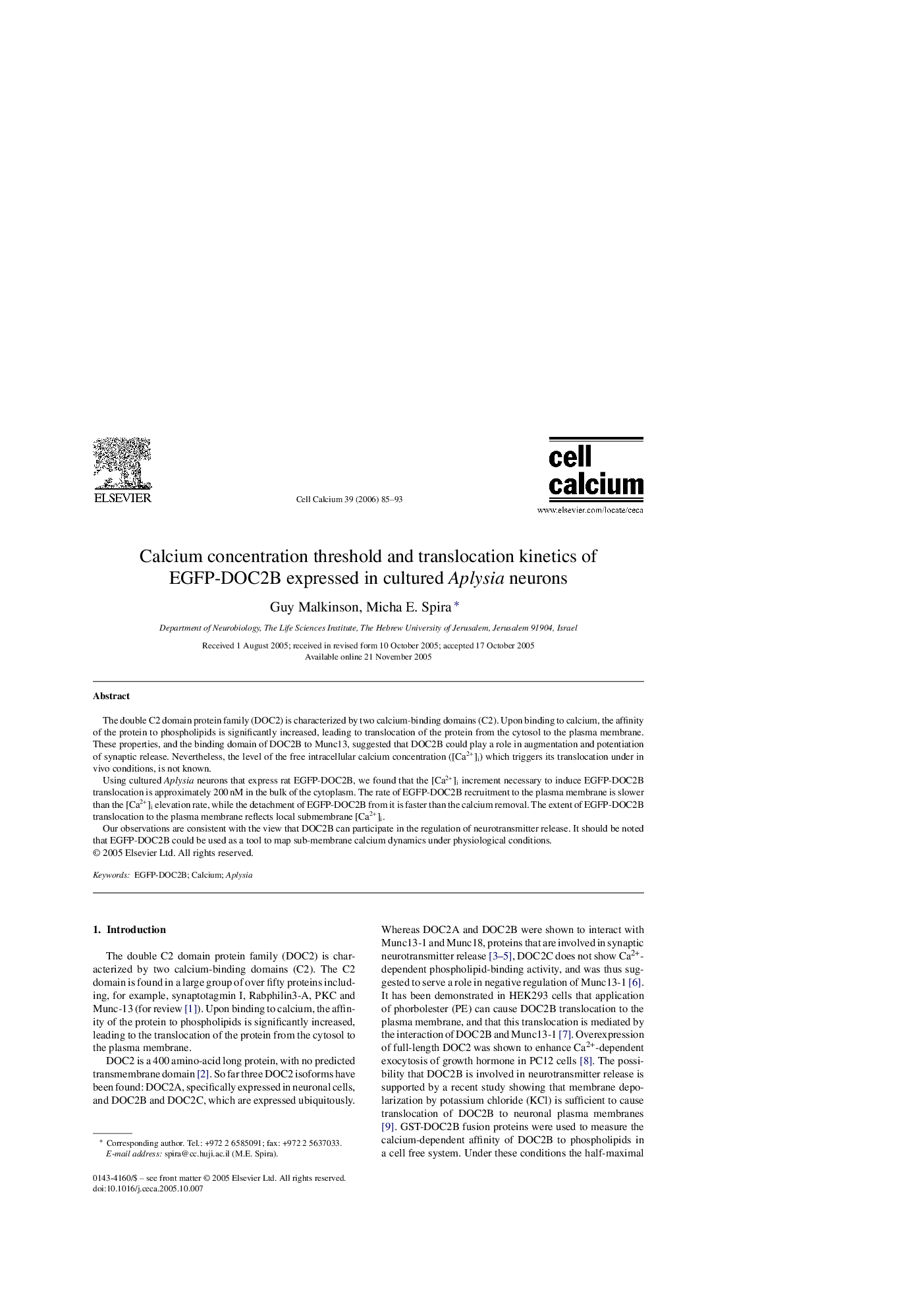| Article ID | Journal | Published Year | Pages | File Type |
|---|---|---|---|---|
| 2166846 | Cell Calcium | 2006 | 9 Pages |
The double C2 domain protein family (DOC2) is characterized by two calcium-binding domains (C2). Upon binding to calcium, the affinity of the protein to phospholipids is significantly increased, leading to translocation of the protein from the cytosol to the plasma membrane. These properties, and the binding domain of DOC2B to Munc13, suggested that DOC2B could play a role in augmentation and potentiation of synaptic release. Nevertheless, the level of the free intracellular calcium concentration ([Ca2+]i) which triggers its translocation under in vivo conditions, is not known.Using cultured Aplysia neurons that express rat EGFP-DOC2B, we found that the [Ca2+]i increment necessary to induce EGFP-DOC2B translocation is approximately 200 nM in the bulk of the cytoplasm. The rate of EGFP-DOC2B recruitment to the plasma membrane is slower than the [Ca2+]i elevation rate, while the detachment of EGFP-DOC2B from it is faster than the calcium removal. The extent of EGFP-DOC2B translocation to the plasma membrane reflects local submembrane [Ca2+]i.Our observations are consistent with the view that DOC2B can participate in the regulation of neurotransmitter release. It should be noted that EGFP-DOC2B could be used as a tool to map sub-membrane calcium dynamics under physiological conditions.
